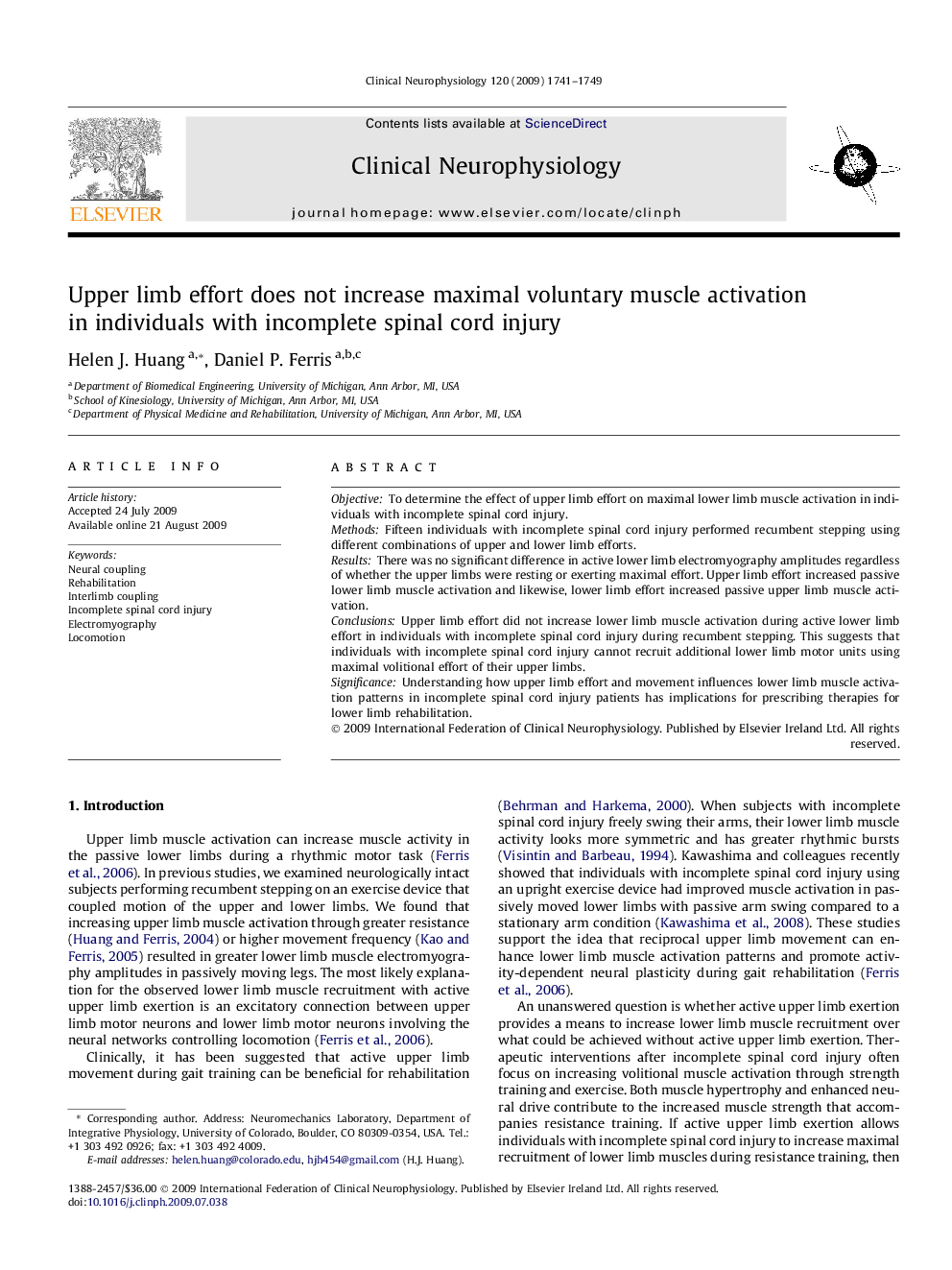| Article ID | Journal | Published Year | Pages | File Type |
|---|---|---|---|---|
| 3046406 | Clinical Neurophysiology | 2009 | 9 Pages |
ObjectiveTo determine the effect of upper limb effort on maximal lower limb muscle activation in individuals with incomplete spinal cord injury.MethodsFifteen individuals with incomplete spinal cord injury performed recumbent stepping using different combinations of upper and lower limb efforts.ResultsThere was no significant difference in active lower limb electromyography amplitudes regardless of whether the upper limbs were resting or exerting maximal effort. Upper limb effort increased passive lower limb muscle activation and likewise, lower limb effort increased passive upper limb muscle activation.ConclusionsUpper limb effort did not increase lower limb muscle activation during active lower limb effort in individuals with incomplete spinal cord injury during recumbent stepping. This suggests that individuals with incomplete spinal cord injury cannot recruit additional lower limb motor units using maximal volitional effort of their upper limbs.SignificanceUnderstanding how upper limb effort and movement influences lower limb muscle activation patterns in incomplete spinal cord injury patients has implications for prescribing therapies for lower limb rehabilitation.
